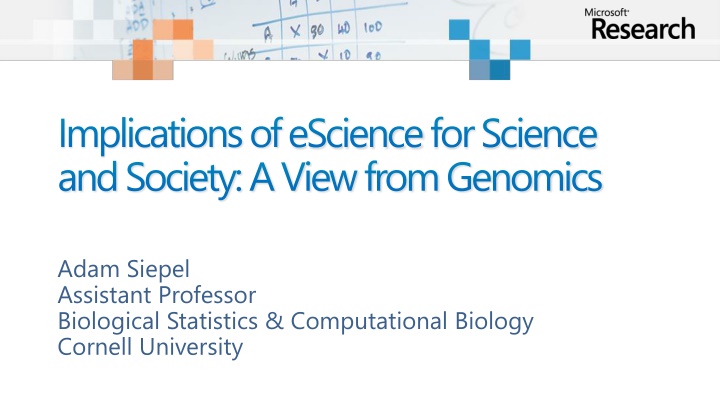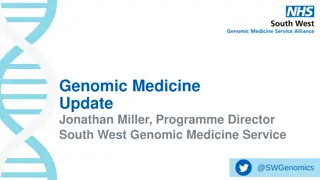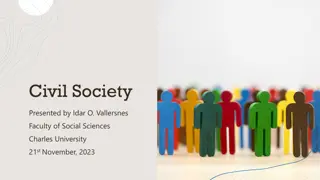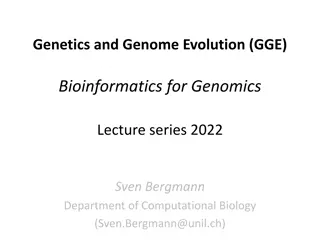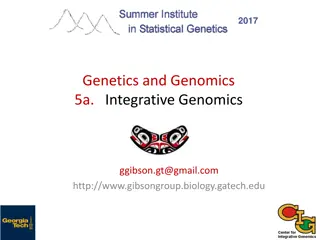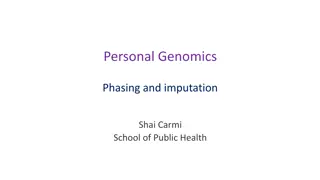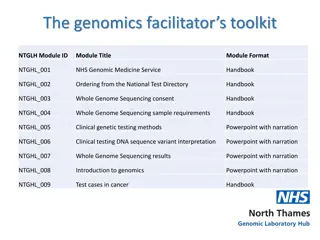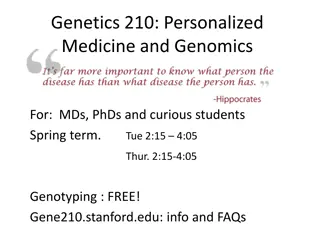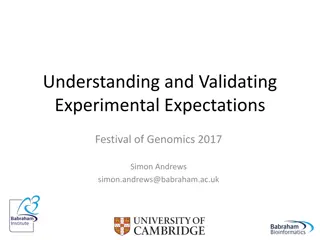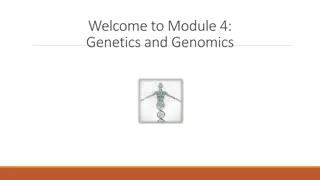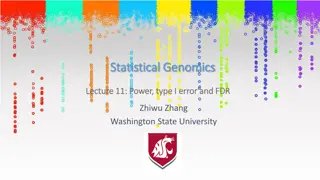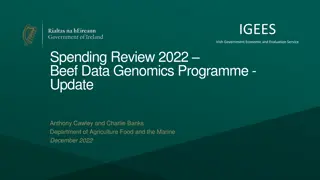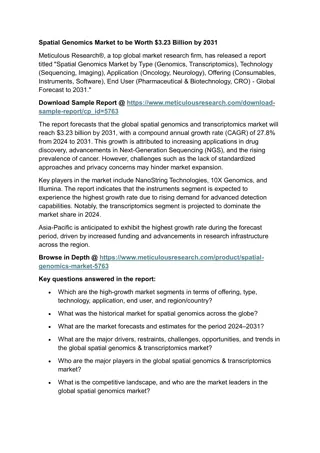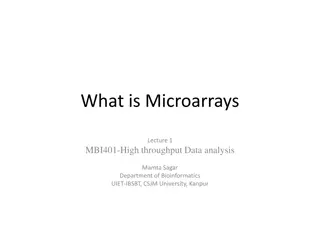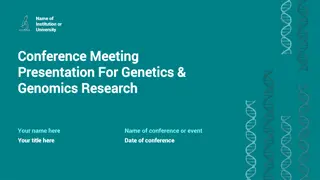and Society: A View from Genomics
This presentation explores the impact of eScience on genomics, highlighting the growth, challenges, and potential benefits in science and society. It delves into the interesting perspectives in genomics, current landscape, movements such as open-access publishing and personal genomics, and implications for citizen scientists. The horizon shows advancements like improved connectivity, better access to underlying science, clinical genotyping, and dynamic publication models.
Download Presentation

Please find below an Image/Link to download the presentation.
The content on the website is provided AS IS for your information and personal use only. It may not be sold, licensed, or shared on other websites without obtaining consent from the author.If you encounter any issues during the download, it is possible that the publisher has removed the file from their server.
You are allowed to download the files provided on this website for personal or commercial use, subject to the condition that they are used lawfully. All files are the property of their respective owners.
The content on the website is provided AS IS for your information and personal use only. It may not be sold, licensed, or shared on other websites without obtaining consent from the author.
E N D
Presentation Transcript
Implications of eSciencefor Science and Society: A View from Genomics Adam Siepel Assistant Professor Biological Statistics & Computational Biology Cornell University
Why is the Genomics Perspective Interesting? Area of tremendous growth Computing plays a central role Of increasing interest to nonspecialists Important in the commercial, academic, and government sectors Complex concepts, large data sets, lots of noise The typical molecular biologist is a good proxy for a citizen scientist vis- -vis computer literacy
Current Landscape Widely used public, web-based resources for researchers (NCBI Entrez, Genome Browsers, OMIM, PubMed, etc.) Many academic analysis programs (of highly variable quality) Some commercial analysis and visualization packages Strong online/open-access publication movement Decent educational resources for lay people: blogs, wikipedia, etc. (but unconnected) Rapid growth in resources for personal genomics
Two Movements Open-access publishing Public Library of Science (PLoS): seven journals, rigorous review, high impact factors BioMed Central (BMC): 190 journals (!), peer review, rapid turnaround, respectable impact Both pay-to-publish, free distribution Personal genomics Most famous: 23andMe, Navigenics, deCODEMe Consumer genotyping (500k-1M SNPs) from saliva samples for $1000 $2500 Electronic report of disease risk; in some cases geneology, nondisease phenotypes Ethical, legal, and political controversy
Some Implications More information for citizen scientists Opening up of black box of scientific research; democratization of science Opportunity to write as well as read Increased dependency on electronic resources, eScience infrastructure
On the Horizon Improved connectivity between resources at different levels: blogs, textbooks, wikipedia, browsers, research papers Better access to underlying science from personal genomics gateways Genotyping in a clinical setting (for diagnosis, guiding treatment); requires computational infrastructure! Progress toward a more dynamic, interactive publication model Steady progress in usability and integration of tools and databases
Also Coming (?) Use of new genotyping technologies in forensics, paternity testing, etc. A much stronger form of personalized medicine (every genome sequenced) A completely different publishing model (?) Analytical power tools in the hands of citizens (association mapping, ancestry inference, ) (?) Gene therapy (?)
Successes and Lessons Learned Attaching funding to community contributions can be effective Tool developers need recognition (Bioinformatics application notes) Comprehensive databases with simple, general visualization are catalysts for progress (Genome browsers) Components and pipelines work Progress has to be bottom-up as well as top-down
Current Obstacles Incentives still not adequate in some cases: improving annotations, building well-engineered software, ensuring scientific reproducibility, obeying standards, etc. Privacy and security are HUGE unresolved issues Academic world still very focused on papers, but papers are static, machine nonreadable, incomprehensible to lay people Hording of data for attribution or profit Difficulty of interpreting results (personal genomics, phylogenetics, etc.)
Some Resources NCBI gateway: www.ncbi.nlm.nih.gov UCSC Genome Browser: genome.ucsc.edu Ensembl Genome Browser: www.ensembl.org PLoS Gateway: www.plos.org BMC Gateway: www.biomedcentral.com Personal genomics: www.23andme.com, www.navigenics.com, www.decodeme.com
Microsoft Research Faculty Summit 2008
